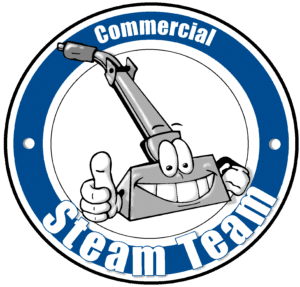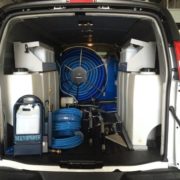Why Use Professional Hot Water Extraction Carpet Cleaning?
Hot Water Extraction has been the primary carpet cleaning method since 1947. Many people call it “Steam Cleaning”. It is simply a pressure washer that is followed by a vacuum to dry it. The strength of equipment varies from little rental portables like Rug Doctors, to powerful machines that run directly off of the V8 (8 cylinder) engine.
Though it seems silly to lump those together into one category, that is exactly what companies do that try to compete with Hot Water Extraction. These companies use statistics gathered from janitors and homeowners who rent small machines without training and try to do the job of highly trained professionals themselves. Many of these people leave the carpet wet (it should never be left more than damp to the touch). Wet carpet can take days to dry and if damp for more than 36 hours in ideal circumstances carpet can mildew (I recommend adding an enzyme deodorizer to the rinse that feeds on mold and mildew. this prevents its growth if something were to go wrong) .
Real professionals know to leave the carpet as dry as possible. If they don’t then they find out very shortly after starting their business when the phone calls come pouring in wondering why the carpet sloshes beneath their feet.
The other mistake made by non-professionals is the use of oil based products. Professionals by and large stopped using oil based products many years ago because it was discovered to attract dirt to the areas most heavily worked on. This just made the carpet look worse within months of the cleaning. It is also important to rinse the carpet with a rinse that will balance the ph. Level. Left unbalanced, the carpet will also rapidly re-soil. Some professionals still make that last mistake.
Hot Water Extraction, when done by professionals still remains the safest method of carpet cleaning to this day. Like any industry like this, be sure to find a company you feel you can trust. It’s a safe adage that if the price seems too good to be true than it probably is. There is not a lot of room for profits in the carpet cleaning industry, so if you cut your prices too far they need to be made up for somewhere else.
The final mistake that most do-it-yourselfers make is the rotary brush, or pad systems. Most dry cleaning methods are this way. They push down the dirt to the backing where it still causes problems and they don’t fully rinse out their cleaning agents. They also add wear and tear to the areas that already have it. The dirtier the area the harder they need to scrub the carpet and the more residue they leave behind. This can unravel the carpet fibers as well.
Always make sure to work witha knowledgeable professional to ensure the best life for your carpets and the healthiest experience for those that live, play, and work on them!

